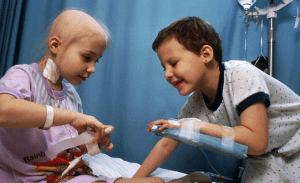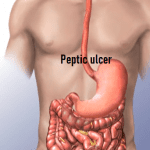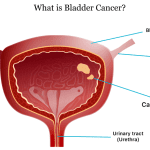When someone diagnosed with cancer or tumor-related illness, then few questions begin to roll our minds is that, whether chemotherapy has been given to the patient or not, and how long it has been given if given how many times he has taken it, etc. Although, many of us have a rough idea about chemotherapy, and many people have no clear idea of what exactly it is.

Chemotherapy is a treatment for cancer. It destroys cancer cells with the help of drugs. There are several types of chemotherapy. But all work the same way. It stops cancer cells from growing and spreading to other parts of the body. So let’s talk about chemotherapy more deeply.
What is Chemotherapy?
Chemotherapy is one of the most widely used methods of modern cancer treatment. Chemotherapy is a type of treatment that destroys cancer cells and stops them from spreading. This disrupts the food supply of cancer cells, which causes the cell to be destroyed in the process of apoptosis. The amount of chemotherapy given to a patient depends on the size and the extent of the cancerous tumor.
However, one type of treatment does not apply to all types of cancer. Different types of cancer cells respond to different types of medications.
Chemotherapy involves a combination of eight types of medications for the best results. Physicians are trying to combine new types of medicine to improve treatment through chemotherapy. Most of the time, the body becomes weak due to chemotherapy. But some modern chemotherapy creates little problems.
It is not possible to guarantee that the cancer cells or tumors will be completely eradicated with the use of this therapy. However, because of its high success rate compared to other treatments, many doctors consider it to be the last cure for cancer. In many cases, chemotherapy is applied to the patient so that he or she can live longer or suffer less. Treatment can take days, weeks, or even months, depending on the severity and complexity of the disease.
Also Read – How to Increase immunity or Immune system In our Body, Natural Way to Increase Immunity
History of Chemotherapy:
Chemotherapy was started early in the twentieth century. As it may sound strange, the nitrogen mustard gas using in this treatment today was used as a chemical weapon during World War II. That’s when researchers first noticed a striking effect of the gas. That is, when a person inhales the gas, the number of white blood cells in his body decreases significantly.
Then, in the early 1940s, two pharmacologists, Alfred Gilman and Lewis Goodman began research on the effectiveness of mustard gas in curing lymphoma. As part of the study, they performed experiments on rats. Studies have shown that the application of mustard gas is showing positive results in the destruction of rat tumors.
Inspired by this success, the Gilman-Goodman duo teamed up with thoracic surgeon Gustav to create a minimal mixture of mustard gas. That is the first chemotherapeutic drug to be successfully applied to humans.
Gilman and Goodman completed their research in 1943, and their research was published three years later. Since then the use of nitrogen mustard gas, as a cytotoxic drug for the treatment of lymphoma, has become popular in the United States.
Types of Chemotherapy:
There are usually four types of drugs that are most commonly used in chemotherapy. These are:
- Alkylating Agent:
This chemical acts directly on the tumor and disrupts its mitosis process. As a result, the cell, which continues to divide uncontrollably, loses its ability to divide.
- Antimetabolites:
It makes vital proteins for cell growth and protection.
- Plant alkaloids:
These are also called mitotic inhibitors. It impairs cell growth and division. As a result, harmful cells can no longer grow.
- Anthracycline:
It is a type of anti-tumor antibiotic, which inhibits the synthesis of DNA and RNA so that the cells cannot divide. However, they differ from antibiotics.
Also Read – What Is Diabetes & What Are The Common Symptoms Of Diabetes? Here Are Some Details
Other Types of Chemotherapy:
Adjuvant Chemotherapy:
This therapy is used to destroy cancerous tumor remnants after tumor surgery. This blocks the way for cancer to come back.
Neo-adjuvant Chemotherapy:
This therapy is used to shrink the tumor before surgery. This makes tumor removal easier.
Induction Chemotherapy:
This therapy is needed to cure cancer like acute leukemia.
Consolidation Chemotherapy:
This therapy is used to relieve the disease and get stability. Another name for it is intensification chemotherapy.
Maintenance Chemotherapy:
This therapy also works to prolong the relief of the disease, but it is applied in very small doses. It is used in the treatment of acute lymphocytic and pro-lymphocytic leukemia.
First-line Chemotherapy:
The most suitable and proven therapy for any cancer is called first-line therapy for that cancer. It is also called standard therapy.
Second-line Chemotherapy:
When first-line therapy does not make it possible to prevent cancer cells, it is time for second-line therapy. Another name for it is salvage therapy.
Palliative Chemotherapy:
The function of this therapy is to observe how the symptoms of the disease are changing.
Way to Give Chemotherapy:
Intravenous:
In most cases, chemotherapy is given intravenously. In this process, the liquid medicine from a bag slowly enters your veins with the help of a tube. The medicine is given in a vein of your hand or chest. To give once, it can take from a few hours to a few days. You have to go to the hospital to take it and when it is done you can go home.
Also Read – Ketogenic Diet: A Detailed Beginner’s Guide to Keto Diet
Tablets:
Sometimes chemotherapy is given orally through tablets. You can take the tablet at home. However, every few days you have to go to the hospital for a check-up.
Take exactly what your doctor tells you to take. Taking more or less can reduce the effectiveness of the drug and can cause harm. If you have a problem with medication, such as forgetting to take a tablet, or having a physical problem shortly after taking the medication, talk to your doctor.
Other Types:
Sometimes other types of chemotherapy may be given, like: By subcutaneous injection, by injection into the muscle, by injection into the spine, with the help of skin cream.
Chemotherapy will last for several months with a few days of rest. Care should be taken for women to ensure that women do not become pregnant during chemotherapy. If you need to take any other medicine during chemotherapy, talk to your doctor first. Taking other medications can reduce the effectiveness of chemotherapy and cause serious side-effects.
Also Read – High Blood Pressure or Hypertension: 8 Ways To Control High Blood Pressure
Chemotherapy Drugs:
Here are some drugs that are using on chemotherapy:
- Doxorubicin
- Mitoxantrone
- Bleomycin
- actinomycin D
- doxorubicin
- mitomycin
- 5 fluorouracil
- 6 mercaptopurine
- Cytarabine
- Capecitabine
- Fludarabine
- Gemcitabine
- Methotrexate
- Pemetrexed
- Pentostatin
- Thioguanine
- Chlorambucil
- Cyclophosphamide
- Thiotepa
- Busulfan
Chemotherapy as Cancer Treatment:
It can be used if cancer has started to spread to other parts of the body or if there is a risk of spreading. It can be used:
- When trying to eradicate cancer
- To enhance the effectiveness of other treatments, for example, it may be used with radiotherapy or before surgery.
- To reduce the chances of cancer coming back after radiotherapy or surgery.
- To eliminate the symptoms, if it is not possible to eradicate cancer.
The effectiveness of chemotherapy is not always the same. Ask your doctor how effective this will be for you.
Things to Do Before Chemotherapy:
If doctors think chemotherapy is the right treatment for you, they will let you know. Then it is up to you to decide whether to do it or not. You can ask doctors these questions before making a decision.
- What is the purpose of giving chemotherapy, for example, is it trying to eradicate cancer, alleviate the symptoms, or increase the effectiveness of other treatments?
- What side effects can be seen and what are the ways to prevent/reduce them?
- How effective the treatment can be.
- Whether any other treatment is possible instead of chemotherapy.
Test and Check:
Some tests may be done before starting chemotherapy. These will help you to see that, what is the condition of your body and whether chemotherapy is right for you or not.
Tests that may be done:
Blood tests: To see, what are the condition of your liver and kidney and how many blood cells you have.
X-rays and scans: To see the shape of your cancer.
Your height and weight: To understand the right dose for you height and weight measurement is also important.
Chemotherapy Side Effects:
In addition to destroying cancer cells, chemotherapy can damage some healthy cells. Due to this, some side-effects can be seen. The following side effects are usually seen in chemotherapy.
- There can always be fatigue.
- May cause vomiting.
- Hair may fall out.
- The chances of infection may increase.
- The face may feel heavy.
- The skin may become dry and itchy.
- May cause diarrhea or constipation.
These side-effects can be treated and most patients will get better after chemotherapy. Some people are hesitant about chemotherapy because of these side-effects. Many people want to stop treatment after a few days. If you have any such doubts, talk to your doctor. He or she will tell you what benefits you will get from chemotherapy or if you have any other options. Then decide what you want to do.
The side-effects of chemotherapy can be painful. But in most cases, these are not serious. However, if you have any of the following symptoms, talk to the doctor immediately:
- If you have a fever.
- If the body trembles in the cold.
- If you have trouble on breathing.
- If you have chest pain.
- If blood comes out through the nose or gums.
- If the bleeding from any other part of the body does not stop even after holding it with pressure for 10 minutes.
- If vomiting does not stop.
- If you have diarrhea more than four times a day.
Chemotherapy Success Rate:
The success rate of chemotherapy depends on the type of cancer. For example, chemotherapy may be more effective in testicular cancer and Hodgkin’s lymphoma. But chemo on its own cannot cure other cancers. In these cases, chemo acts as part of other treatment packages.
The main treatment for breast cancer or bowel cancer is surgery, where chemotherapy courses are also added to prevent the recurrence of cancer. Whether chemo eliminates cancer or not, patients may consider taking this therapy to shrink the tumor, relieve the symptoms, and improve the quality of life.
A 2006 study determined the success rate of chemotherapy in patients with lung cancer. The research team collected 761 tumor samples. They discovered that the presence of a special protein called ERCC-1 in tumors had a negative effect on chemo function. The study found that chemotherapy was more effective in tumors that were deficient in this protein, and patients with these tumors lived an average of more than 1.5 yrs. But the efficacy of chemo in tumors carrying ERCC-1 was not worth mentioning. According to the 2016-17 report of the American Cancer Society, the survival rate of chemotherapy for cancer is satisfactory.
Final Words:
Cancer is a lifestyle disease; with a proper lifestyle, cancer can be prevented. Chemotherapy is a common tool for medical science to treat cancer. Thus chemotherapy has lots of side effects, but it depends on the stage of cancer and type of cancer. Not all drugs are harmful, so if you diagnosed with cancer then don’t go straight for the chemotherapy. First, consult with your doctor then take the decision as per your need. Eat more fruits and vegetables, drink wheatgrass juice (it reduces the side effects of chemotherapy), and maintain good hygiene.

